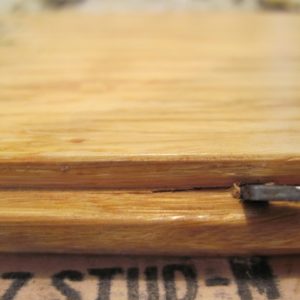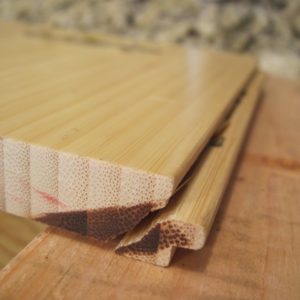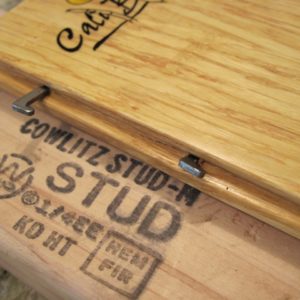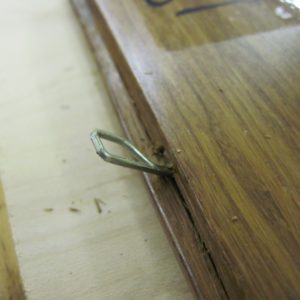Bamboo Nailing Nightmares
I recently went through the selection and installation of bamboo flooring and I thought I’d share my experiences. I decided to nail the stuff down on a second floor 5/8” plywood substrate. I’m not claiming to be an expert here, but I had limited luck finding sources on the internet that had experience nailing this stuff down. I also made several calls to the manufacture and to a couple of the floor nailer manufactures (Senco, Bostick) and frankly the advice was not terrific.
The real trick was finding anybody with real experience nailing down “Bamboo Strand”. For those that are not familiar with the product (which is becoming very popular) it is strips of bamboo shredded and then compressed under tremendous pressure with a binder adhesive. The result is a uniform grained product that is extremely hard. You can get the feel for the look in the photos.
There are many manufactures of the product. Pretty much everyone that sells bamboo now sells stranded bamboo. Most say the product can be glued, nailed or floated. It’s available in solid and engineered packages. In my experience if you are going to nail it, like I wanted to do, you better do your homework. As you can see from the photos this stuff is so hard it’s difficult to get something to penetrate it.
I first started with a standard Senco flooring nailer (both manual and pneumatic). It waded up the cleats or split the tongue off the flooring. I called the bamboo manufacture back and they recommended I call their preferred nailer (Porta-nails) to find out which nailer would work best. The support at Porta-nails was great. Their approach is to use a lighter gauge fastener to prevent splitting the material. They gave me two options. The first being a high end, very powerful pneumatic nailer they had just released called the portamatic evolution which shoots a proprietary 18G cleat. Downside was it cost nearly $700 bucks. I decided the first option was too spendy for me. The second option was their 461A 18G flooring stapler for around $250. Their support was unsure if the stapler would have enough guts to drive through the strand bamboo. As you can see from the photos when I tried the stapler on the strand bamboo it made paper clips out of them.
Bottom line you’re not going to have much luck nailing down the strand stuff. Maybe with the high end porta-nailer (that I did not try) but not a standard flooring nailer. You probably need to think glue down. I ended up abandoning the strand bamboo and installing regular natural bamboo with the 18G stapler, which worked great.
I hope this info is of use to someone like me who was looking for installation info on this new stranded bamboo,
























Replies
Strangely, none of your photos is of strand bamboo- I see only vertical grain bamboo.
In any case, yes one needs to use the appropriate fastener for strand bamboo as it is extremely dense. I use a Primatech Q550 to fire 18g cleats. If you use regular (16 or 15 gauge) flooring cleats you will split the tongues as your pictures show. You also need to stay clear of the board ends to avoid splitting (min 2" ) Since strand bamboo is extremely dense- the set of the cleat is very important. If you over-set the cleat you can crack the tongue or cause puckering or bulging of the floor board surface. Anyway: I love my Primatech gun. Made in Quebec! Best flooring nailer I've ever used (fully adjustable for different flooring thicknesses and tongue configurations)
samples?
Looks like he's using samples to test the staples and cleats.
Regardless...I first used bamboo back in the mid-90s, and I've pretty much used all the iterations that have come along since, when bamboo was just bamboo.
After trying several sizes and styles of fasteners, I settled on staples. 1516 gauge, two inch long, half-inch crown, coated staples. Between the varying types of bamboo I do have to adjust the gun pressure to get the staples set and avoid splitting, but once dialed and with proper operator mechanics in I get consistent set depth and no splitting of the tongue.
If I get out of synch as I'm going across the floor and don't have the floor stapler properly seated on the board, I might get an unset staple or a split tongue.